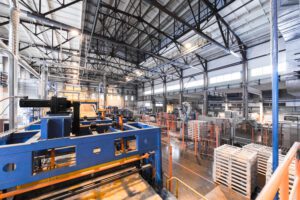How Iowa’s Manufacturing Sector Can Best Leverage Technological Advancements
By: Eric Lohmeier, CFA
Excerpt from interview with Eric Lohmeier, CFA in “Iowa manufacturers outline advancements, challenges from integrating AI, robotics, vision systems to production” By Sarah Diehn in The Business Record June 14, 2024
The No. 1 priority for Iowa and manufacturers writ large is effectively instituting, and, more importantly, mandating uptake across the organization of a full transition to an enterprise-wide use of a robust ERP (Enterprise Resource Planning) system. Having the opportunity to work with dozens of manufacturers over our two decades of providing investment banking services in the Midwest, it is still the exception rather than the rule when it comes to a full successful implementation of ERP for the base-level operations of even large (200-employee-plus) manufacturers. It is probably the rule in Midwest manufacturers to have invested in an ERP, but quite exceptional to have these systems as the base operating system for company-wide operations. Without the comprehensive use of these systems, incorporating automation processes in finance, human resources, supply chain, services, procurement, etc., then these businesses are really just sailing in the open ocean with only the stars (latitude) as their guide, prior to solving the problem of longitude – they are working with only half the information and essentially guessing on the rest. Successful full implementation of a solid ERP system as the base level for the entire operation of a manufacturing business is, in my opinion, the first priority when it comes to further developing artificial intelligence capabilities for productivity gains.
When it comes to AI, the technology is only useful with a critical amount of “trained” data. In a nutshell, AI at its most simple is running millions to billions of linear algebraic equations very quickly. There is no use case with AI unless there are datasets large enough to train on and do the math, because benefits in automation really come down to a literal calculation of labor cost savings versus the cost and implementation of automation tools. So AI is really just another step in a few millennia of productivity enhancements and innovation in manufacturing and any human endeavor, really. It has been affecting Iowa manufacturing since the first blacksmiths and grain processors in our state set up shop.
A model to emulate for many manufacturers would be Deere – the company is a global leader in industrial automation in manufacturing, and one of the primary examples in DE’s global footprint resides at the John Deere Works facility in Ankeny. I am paraphrasing a statistic I once heard on a tour of this facility, but in the last 50 years, the Ankeny location does five times the level of production with 20% of the labor from when they took over the facility from the Department of Defense post-World War II. A good thing, as well, as our state is at best a zero-bound population growth environment, and an aging one at that. Birth rates in the domestic U.S. are at the lowest levels in our nation’s history, well below the steady state replacement rate of 2.1 births, and immigration reform in this country is as close to hopeless as buying a winning Powerball lottery ticket. Manufacturers in the Midwest must innovate and automate constantly or will not survive – full stop.











